How To Go From Activating The Wrong Muscles, Getting Zero Glute Results, and Wasting Time On Outdated Advice
To Finally Getting Your Glutes To Fire And Grow, By Restoring Your Glute Platform
In As Little As 10 Minutes a Day
30-day guarantee. No fluff. No fine print.
It's strange to finally feel sore glutes after a workout. Is it weird that I want to sit on a heat pack?
- Abby, BBB member
You're not imagining it.
You can do the "best" glute exercises...
Squats. Hip thrusts. Kickbacks. All of it.
And still feel nothing.
That's what makes glute training seem so unfair.
The movements look right. They feel like effort.
But somehow your glutes don't respond the way they're supposed to.
In fact, a 2020 study in the Journal of Sports Science & Medicine showed you can do the 'best' glute exercises while barely using your glutes at all.
We now know it's not because of your genetics.
It's not because of a lack of 'mind-muscle connection'... (whatever that is)
And no, it's not because you need to work harder.
(If doing more reps was going to fix it, it would have fixed it already.)
So if you've ever done glute exercises and felt like something was just... missing...
Or the results you got for your effort just didn't add up...
You're not crazy for feeling that. It's a real thing.
It's Not You. It's the Model We've Been Using.
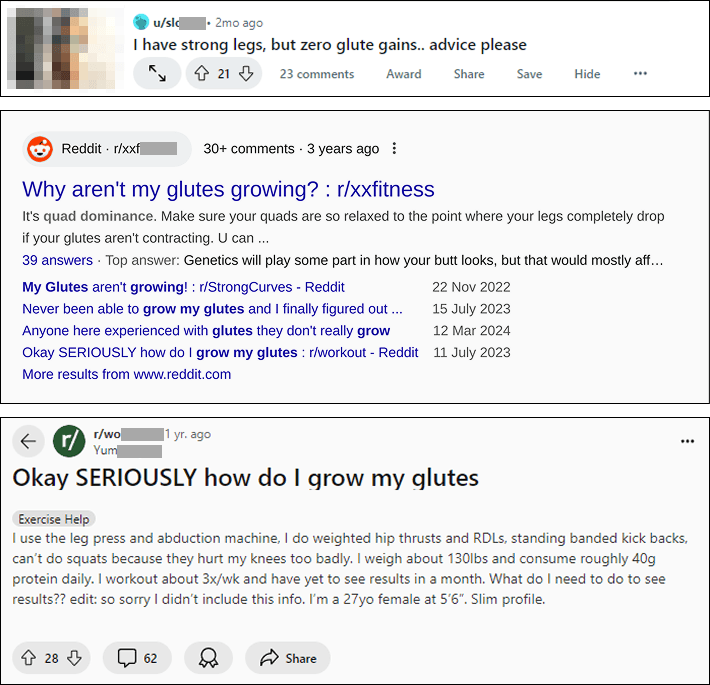
For years, the fitness industry has pushed a simple formula:
Do glute exercises → get glute results.
But if it was really that simple we wouldn’t have so many people still asking:
“Why won’t my glutes grow no matter what I do?”
You trusted the advice. You did the work.
Why didn't you get what you were promised?
It's clearly not a lack of effort.
(Or a lack of protein: if you're seeing results elsewhere, you're getting enough to build glutes.)
It's a blind spot in the way most programs are designed.
They're built on the assumption that glute activation is automatic.
That if you do the "best" exercises, your glutes are guaranteed to switch on.
But they're overlooking something vital:
Your glutes aren't like most other leg muscles.
Your calves are the only muscles that can point your toes.
Your quads in your thigh are the only muscles that can straighten your knee.
So for these muscles...
Movement. Guarantees. Activation.
Because there's no backup muscles. No 'Plan B'.
But when it comes to hip movement? Your body has options.
It might use your glutes...
Or it might use your hamstrings, inner thighs, or even your lower back to get the job done.
So unlike your calves or your quads, your glutes don't have to fire.
And they won't... unless the right conditions are in place.
That's why you can do "glute" exercises but not see any results.
Most programs miss this entirely because they don't realize it's happening.
Which is why results feel random:
Two people. Same program.
One feels it. One doesn't.
And no one explains why.
They'll say it's a mindset issue. Or genetics.
But it's not.
It's the outdated model they're using.
And new research isn't just showing us why the old model fails...
For the first time, it's revealing the full picture of what our glutes actually need to fire consistently.
You've Done the Work.
This Is The Part No One Taught You.
Most programs jump straight to the "hardest" glute exercises.
Squats. Hip thrusts. Kickbacks. The usual suspects.
But hard work doesn't grow your glutes...
if your body is choosing other muscles to do the work.
New evidence shows that the muscles your body chooses to use isn’t random.
It’s actually quite predictable.
More importantly, this decision your body makes -- glutes or “not glutes”...
is something you can control.
Once you understand which conditions influence the decision…
you can start shifting it in your favor.
That’s where Build a Better Butt comes in.
It doesn’t start with more reps or louder cues.
It starts by restoring what I call your Glute Platform --
the internal foundation your glutes need to fire properly.
Because research is revealing something we didn't know before:
Your glutes are powerful... but only when that foundation is stable.
If your system senses instability, your body tightens muscles around the hip to protect itself:
Your hamstrings. Your hip flexors. And your glutes.
It's quite a clever system.
The problem with that is...
Your glutes can only do one job at a time.
They can stabilize...
or they can move...
but not both together.
If they’re busy bracing, they’re not available to help you lift, sprint, or thrust.
And even the “best” glute exercises will feel like your thighs or back are doing the work...
because they are.
That’s why Build a Better Butt doesn’t just activate your glutes.
It also creates the internal conditions that free your glutes to do what they’re built for.
Once your Glute Platform is working, your glutes shift from 'stabilize' mode to 'DRIVE'.
You feel more control. More connection. More power.
Even simple movements feel different:
Stronger. More targeted.
Like your glutes are finally doing the job they were supposed to.
What you’ll discover inside:

When "glute" exercises don't activate glutes
...how to spot it instantly, and how to fix it (you can't unsee this, it's everywhere).

What makes your thighs and hamstrings take over
...and how to put your glutes back in charge.

How to unlock your Glute Platform
...so you can stop wondering and start knowing every rep will count.

Which popular cues are shutting your glutes down, and what to use instead
...because if 'squeeze your glutes' worked, we wouldn't be here.

A step-by-step system that meets you where you're at
No gym.
No gear.
No guesswork.
Just better glutes.
From home.
In 10 minutes a day.
This isn't another list of glute exercises.
This is a map.
A framework that shows you what's missing... and how to find it.
30 Days Money Back Guarantee
How It Works
You wake up in the morning, put coffee on.
You realize you've got a few minutes before you have to be anywhere, so you log in and hit play on whichever Build a Better Butt drill/exercise you've been feeling lately.
You get on the floor and follow along with the guided video. You know Stu's cues (and dumb jokes) off by heart but it never hurts to hear them again as you go, right?
Actually, you're glad you did -- one of the technique tips somehow makes more sense today, or your body 'gets it' better.
Either way, you immediately feel your glutes connecting even harder than yesterday. Boom!
Still kind of weird how a simple floor-based exercise can work your glutes so intensely.
You decide to finish up with one of the follow-along Glute Flow sequences that have been hitting the spot. That new/old cue is feeling SUPER good. Damn.
Okay, so one of the bracing positions still feels a bit awkward but it's definitely easier than when you first tried it last week. Maybe getting better at that is why your glutes are just... more "on" ... today?
Anyway. You get up off the floor. It's 14 minutes since you put the coffee on. It's gone a bit cold.
Oops.
Worth it, though.
Walking feels... different. Easier. Kind of 'floaty'. Definitely feeling glutes.
You wonder if microwaving coffee makes it taste as bad as they say.
Traditional Way
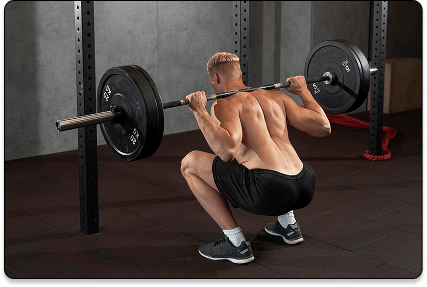
Assumes glutes activate automatically
Ongoing membership fees
Focuses on heavier, harder exercises in the hope your glutes will switch on
One-size-fits-all approach, no matter what your body actually needs
No solution when your glutes check out and your thighs and back take over
Conflicting advice
Inconsistent results
Hours spent in gyms. Hundreds spent on trainers. Still guessing.
Build a Better Butt
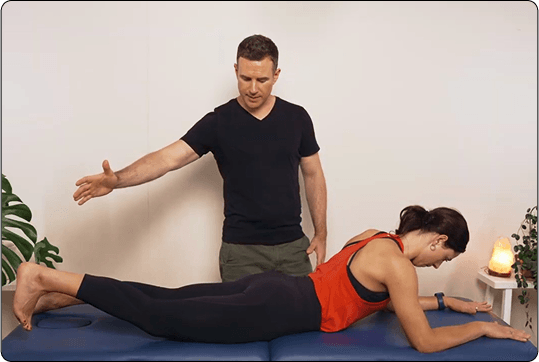
Creates the right internal conditions so that glute activation isn't random anymore
A clear, step-by-step process that works for your body, no matter your starting point
No fluff. No filler. No hype. Just the stuff that quietly solves the problem
Do it at home. In your PJs. For real.
30 Days Money Back Gaurantee
Who This Was Built For
Not everyone needs a new glute program. But if you've felt like something's been missing, even though you're doing all the "right" things, this was made with you in mind.

You've done the recommended glute exercises but never quite felt like your glutes did the thing.

You've sensed something's off, but nobody's been able to explain what it is.

You’re not looking for a shortcut -- you're looking for someone who actually understands the problem.

You don’t need hype or motivation. You just want your effort to lead to progress.
30 Days Money Back Guarantee
Who Created Build a Better Butt?
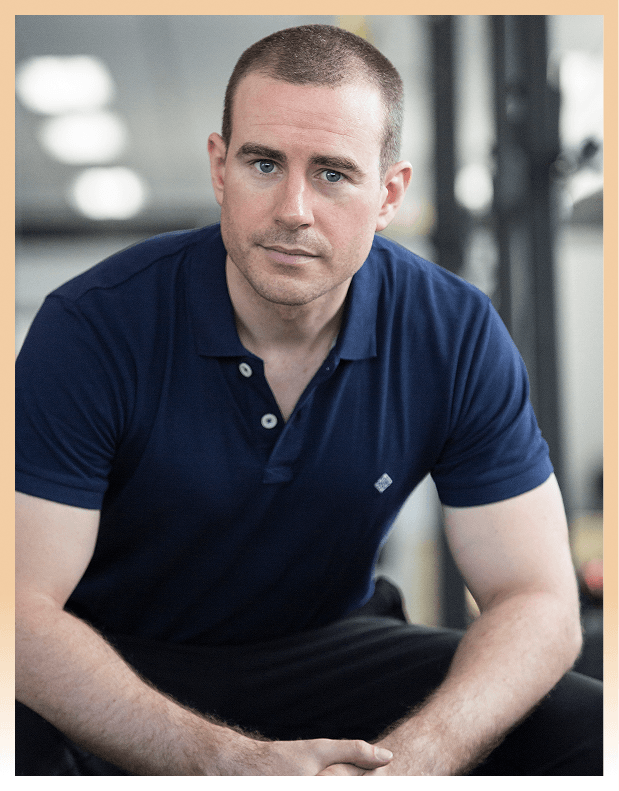
I’m not an influencer.
I’m not a marketing guru.
I’m a coach who spent years trying to figure out why glute training works for some people but not for others.
Honestly, it took longer than I expected.
Mentors. Courses. Study. Travel.
And the research.
So. Much. Research.
Here's what I found:
It's not magic. It’s not genetics.
It's a solvable problem.
We just need to look at pieces of the puzzle most programs are ignoring.
This is the system I wish I had ten years ago.
The one I built so you don't have to keep guessing.
Now it’s yours.
Who Created Build a Better Butt?
I’m not an influencer.
I’m not a marketing guru.
I’m a coach who spent years trying to figure out why glute training works for some people but not for others.
Honestly, it took longer than I expected.
Mentors. Courses. Study. Travel.
And the research.
So. Much. Research.
Here's what I found:
It's not luck. It’s not genetics.
It's a solvable problem.
We just need to look at pieces of the puzzle most programs are ignoring.
This is the system I wish I had ten years ago.
The one I built so you don't have to keep guessing.
And now, it’s yours.

You're Early. That Matters.
Join during pre-launch and you’ll get:
Immediate access to the first part of the course so you can feel your glutes working straight away.
Early access to the crucial Glute Platform modules -- before they're released to the public
Heavily discounted pre-launch pricing
You’ll also get exclusive bonuses, including webinars where I'll personally answer your questions and provide feedback.
(I want early adopters to get great results and tell all their friends, so yes -- I'm invested in making sure you nail this.)
It’s the same course either way. You’re just getting a head start and a little extra help from me.
Join Today to Build Better Glutes
Regular Price: $299
Pre-Launch Price:
$99
Everything Included
A step-by-step video course that takes your glutes from "I think I felt something" to
"Ohhh... so that's what I've been missing!"
Short, effective sessions (10-15 minutes) that fit in easily with the usual life stuff
Practical cues and subtle adjustments change how the movement feels, not just how it looks
Lifetime access, so you can go at your own pace. No schedule. No pressure. No falling behind.
Live Q&A webinars for pre-launch members (because yes, I'm a real person and your questions deserve real answers).
Early Joiner Bonus: Get personal feedback on your technique. Post a video in the group and I'll coach you through what to tweak -- because this only works if it works for you.
This Exclusive Pre-Launch Offer Disappears In:
Once the timer hits zero, the price goes up!
100% Money-Back Guarantee

This isn't a "hope it works" program, it's a "feel it working" program.
You've got 30 days to try it out and feel the difference yourself.
If you apply what you've learned and feel like nothing has changed, I'll refund your money.
No drama. No guilt trip.
You deserve to feel this in your body.
And if you don't? You get your money back.
Don’t just take our word for it
See what others are saying

Skye W

The information on the internet is overwhelming, and I needed someone I could trust to cut through the noise. Stu has been that expert for me, helping me understand my body, improve my movement, and fueling my drive to be better. I’m so grateful to work with him!
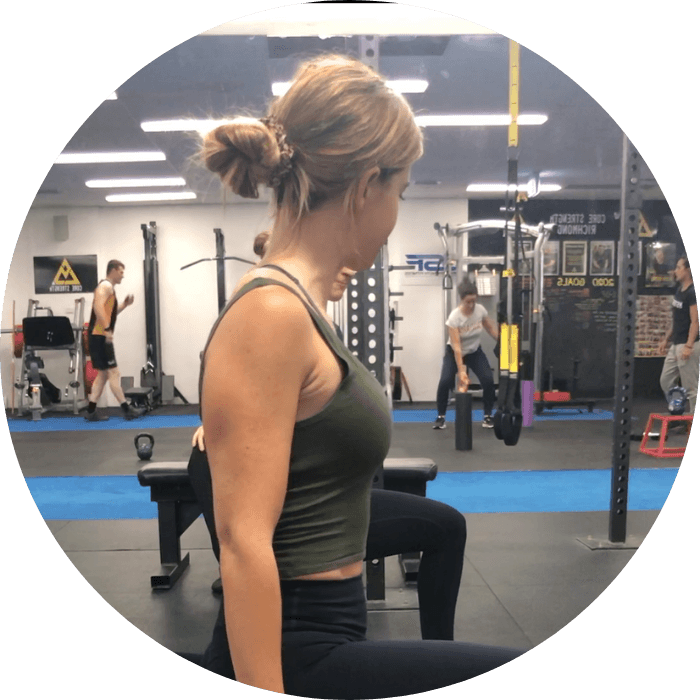
Hannah R

Stu explains things so well, you understand what you’re doing and why. Tonight I felt my upper traps go off for the first time ever and my squat actually worked my glutes. Two achievements in one session! I’ve never met a trainer like him – his knowledge is incredible.
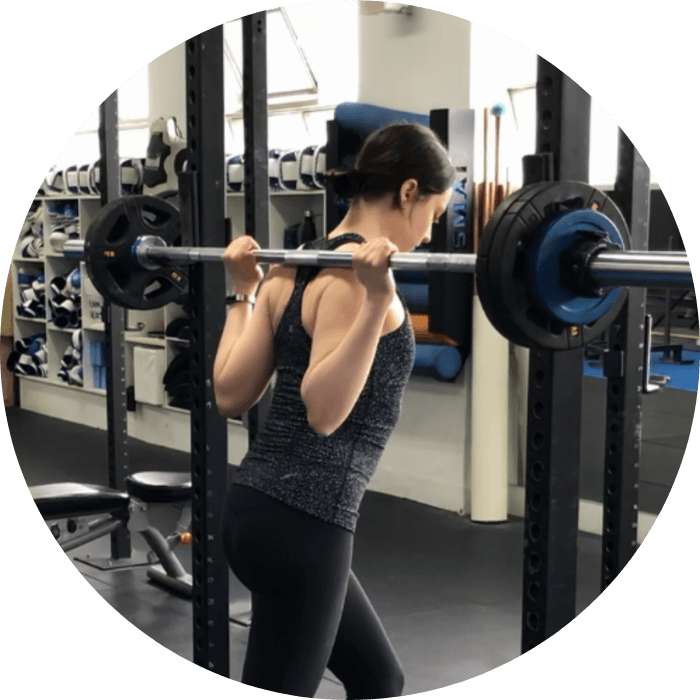
Alicia N

Stu doesn’t just give generic exercises, he understands my body and what I need. He focuses on the small details and thinks outside the box to improve my performance. I’ve never experienced this level of expertise or results with other trainers.
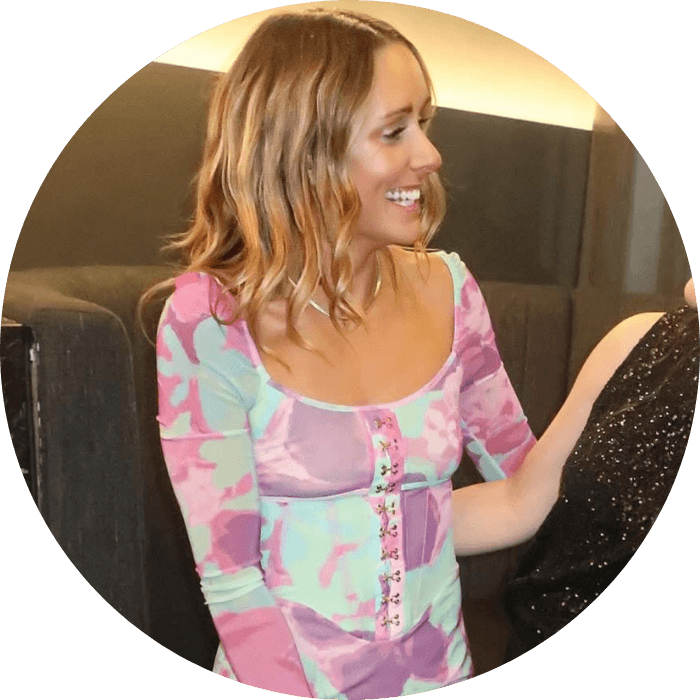
Alexandra P

Before meeting Stu, I had competed in a physique competition with a professional figure coach and squatted as heavy as 85kg. In my first session with Stu, I felt my glutes working harder during a simple bodyweight squat than they ever did squatting 85kg. I realize now my squat technique relied on my quads, and my glutes hardly did a thing. It’s very different now!
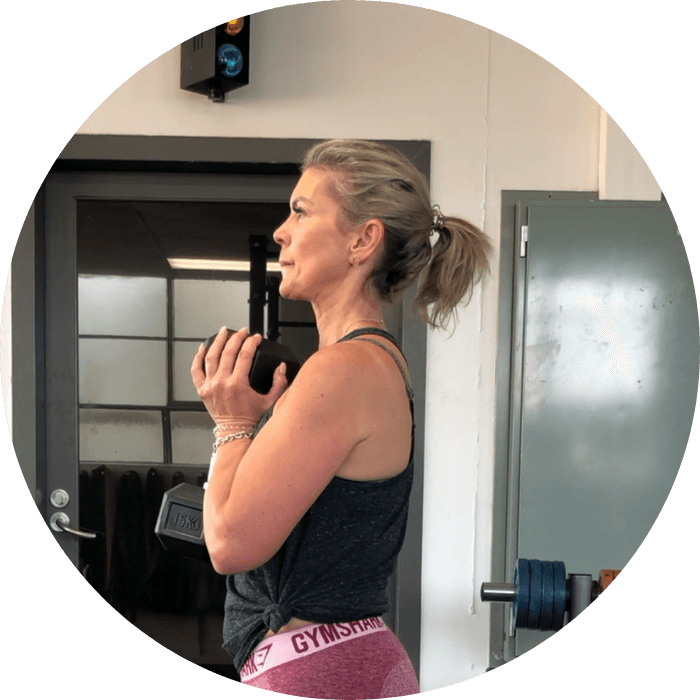
Fiona E

I had been training for a year with a body sculpting specialist and competing as a figure competitor, but I was having trouble developing my glutes, hamstrings, and abs. The work Stu has done with me has improved my physique considerably in such a short time, I can see a big difference in my glutes and abs. I recommend him so highly!
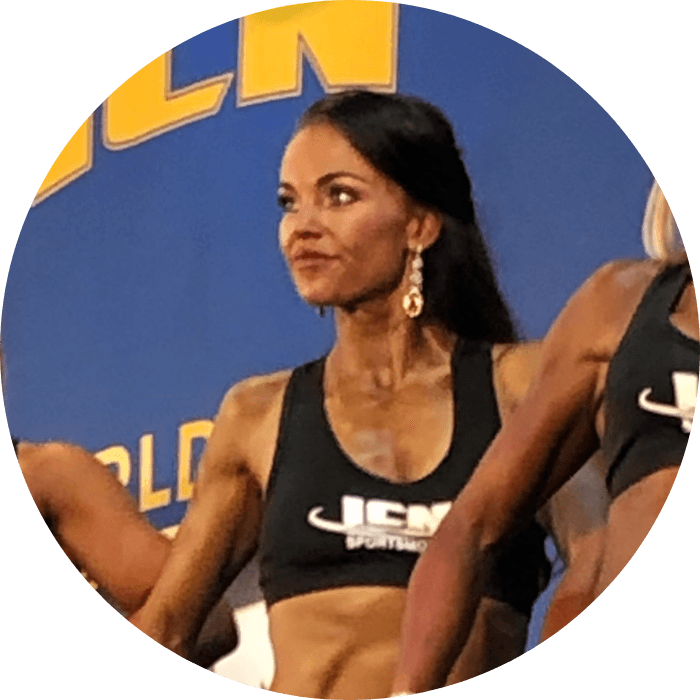
Amanda E

I just keep doing what Stu taught me and my glutes just keep growing!

Sheridan R
(Beautician)

I’ve had personal trainers for years but only got short-term results. Since working with Stu, my core is stronger, I can feel my glutes switch on, and I hold my body differently – I even look slimmer. I wish I had done this sooner!
30 Days Money Back Guarantee
Frequently Asked Questions
That’s exactly who this is for.
If the usual exercises haven’t worked for you, it’s because they skipped a step. This one doesn’t.
It helps you create the conditions your glutes need to actually do their job. That’s the part most programs miss, and the gap this one was built to fill.
Quite a lot, actually.
Join today and you'll get immediate access to the first 5 modules of the course, including Kickstart Your Glutes and the first 3 Glute Platform modules.
Kickstart Your Glutes is exactly what it sounds like: 3 glute drills you can do straight away to feel your glutes firing and eliminate compensations.
The early Glute Platform modules are also available, so you can feel the difference in your glutes as your body begins optimizing those deeper-level conditions.
The final Glute Platform modules -- where we add some of the most intense glute exercises ever onto your Glute Platform -- are nearly ready and will be released shortly.
As a pre-launch member you'll be the first to get access!
You’ll also lock in special pre-launch pricing and exclusive bonuses, including personalized video feedback on your technique and live Q&As with Stu.
You're getting early access.
More than half of the course is already available -- enough to get your glutes and Glute Platform working straight away.
The full course is scheduled for release by 13th October, 2025.
Pre-launch members will get early access to the modules as they’re released -- starting within the next few days. You'll also get access to live Q&As and personalized feedback that won't be available later.
The pre-launch discount ends on 13th October, 2025. After that, the price goes up.
Then we troubleshoot together.
This course was built to help people who’ve felt disconnected from their glutes, so it's normal if some parts take a little trial and error.
You’ll have access to support (including feedback on your technique), and if it still doesn’t feel different, you’re backed by the 30-day guarantee.
That’s not a pitch. It’s a promise.
It’s neither. It’s foundational.
This isn’t about being beginner or advanced -- it’s about filling in the missing pieces most programs skip.
It starts gently and then builds. Whether you’re new to glute training or you’ve been at it for years, you'll reach the point where the work starts to matter.
You can do either.
It works brilliantly as a standalone glute program you can do anywhere, any time, and see meaningful progress.
But if you’re already training -- with weights, at the gym, or any other structured approach -- Build a Better Butt also works as a primer to strengthen your glute connection and improve what you’re already doing.
Some use it before a workout. Some after. Some on rest days.
And for plenty of people, this is the workout.
There’s no single track to follow -- just a better foundation, whether you're squatting like a boss or doing glute drills in your PJs while your coffee brews.
Nope.
You + a floor = enough.
Yes! Once you're in, it's yours for good.
No expiry. No pressure. No falling behind.
30 Days Money Back Gaurantee
Not convinced? I don’t blame you.
Lots of programs say they're backed by science. Very few show their receipts.
Here are just some of mine (I couldn't fit all of them, but you get the idea)...
Anderson, B. E., & Bliven, K. C. (2017). The Use of Breathing Exercises in the Treatment of Chronic, Nonspecific Low Back Pain. Journal of Sport Rehabilitation, 26(5), 452-458. doi:10.1123/jsr.2015-0199
Arunakul, M., Amendola, A., Gao, Y., Goetz, J. E., Femino, J. E., & Phisitkul, P. (2013). Tripod Index. Foot & Ankle International, 34(10), 1411-1420. doi:10.1177/1071100713488761
Beardsley, C., & Contreras, B. (2014). The Increasing Role of the Hip Extensor Musculature With Heavier Compound Lower-Body Movements and More Explosive Sport Actions. Strength and Conditioning Journal, 36(2), 49-55. doi:10.1519/ssc.0000000000000047
Beeckmans, N., Vermeersch, A., Lysens, R., Wambeke, P. V., Goossens, N., Thys, T., . . . Janssens, L. (2016). The presence of respiratory disorders in individuals with low back pain: A systematic review. Manual Therapy, 26, 77-86. doi:10.1016/j.math.2016.07.011
Behm, D. G., Anderson, K., & Curnew, R. S. (2002). Muscle Force and Activation Under Stable and Unstable Conditions. The Journal of Strength and Conditioning Research, 16(3), 416. doi:10.1519/1533-4287(2002)0162.0.co;2
Bergmark, A. (1989). Stability of the lumbar spine. Acta Orthopaedica Scandinavica, 60(Sup230), 1-54. doi:10.3109/17453678909154177
Blaiser, C. D., Roosen, P., Willems, T., Danneels, L., Bossche, L. V., & Ridder, R. D. (2018). Is core stability a risk factor for lower extremity injuries in an athletic population? A systematic review. Physical Therapy in Sport, 30, 48-56. doi:10.1016/j.ptsp.2017.08.076
Boyle, K. L., Olinick, J., & Lewis, C. (2010). The value of blowing up a balloon. North American journal of sports physical therapy : NAJSPT, 5(3), 179–188.
Bradley, H., & Esformes, J. (2014). Breathing pattern disorders and functional movement. International journal of sports physical therapy, 9(1), 28–39.
Buckthorpe, M., Stride, M., & Villa, F. D. (2019). Assessing And Treating Gluteus Maximus Weakness – A Clinical Commentary. International Journal of Sports Physical Therapy, 14(4), 655-669. doi:10.26603/ijspt20190655
Chaudhari, A. M., & Andriacchi, T. P. (2006). The mechanical consequences of dynamic frontal plane limb alignment for non-contact ACL injury. Journal of Biomechanics, 39(2), 330-338. doi:10.1016/j.jbiomech.2004.11.013
Cholewicki, J., Juluru, K., & Mcgill, S. M. (1999). Intra-abdominal pressure mechanism for stabilizing the lumbar spine. Journal of Biomechanics, 32(1), 13-17. doi:10.1016/s0021-9290(98)00129-8
Cholewicki, J., Panjabi, M. M., & Khachatryan, A. (1997). Stabilizing Function of Trunk Flexor-Extensor Muscles Around a Neutral Spine Posture. Spine, 22(19), 2207-2212. doi:10.1097/00007632-199710010-00003
Cholewicki, J., & VanVliet, J. J. (2002). Relative contribution of trunk muscles to the stability of the lumbar spine during isometric exertions. Clinical Biomechanics, 17(2), 99-105. doi:10.1016/s0268-0033(01)00118-8
Chuter, V. H., & de Jonge, X. A. (2012). Proximal and distal contributions to lower extremity injury: A review of the literature. Gait & Posture, 36(1), 7-15. doi:10.1016/j.gaitpost.2012.02.001
Cliftonsmith, T., & Rowley, J. (2011). Breathing pattern disorders and physiotherapy: Inspiration for our profession. Physical Therapy Reviews, 16(1), 75-86. doi:10.1179/1743288x10y.0000000025
Comerford, M., & Mottram, S. (2001). Functional stability re-training: Principles and strategies for managing mechanical dysfunction. Manual Therapy, 6(1), 3-14. doi:10.1054/math.2000.0389
Cook, G., Burton, L., Kiesel, K., Bryant, M., & Torine, J. (2010). Movement: Functional movement systems: Screening, assessment, and corrective strategies. On Target Publications.
Coratella G, Tornatore G, Caccavale F, Longo S, Esposito F, Cè E. The Activation of Gluteal, Thigh, and Lower Back Muscles in Different Squat Variations Performed by Competitive Bodybuilders: Implications for Resistance Training. International Journal of Environmental Research and Public Health. 2021; 18(2):772. https://doi.org/10.3390/ijerph18020772
Courtney, R. (2009). The functions of breathing and its dysfunctions and their relationship to breathing therapy. International Journal of Osteopathic Medicine, 12(3), 78-85. doi:10.1016/j.ijosm.2009.04.002
Cresswell, A. G., Grundström, H., & Thorstensson, A. (1992). Observations on intra-abdominal pressure and patterns of abdominal intra-muscular activity in man. Acta Physiologica Scandinavica, 144(4), 409-418. doi:10.1111/j.1748-1716.1992.tb09314.x
Donnelly, D. V., Berg, W. P., & Fiske, D. M. (2006). The Effect of the Direction of Gaze on the Kinematics of the Squat Exercise. The Journal of Strength and Conditioning Research, 20(1), 145. doi:10.1519/r-16434.1
Don't believe me yet? We're only up to E...
Escamilla, R. F. (2001). Knee biomechanics of the dynamic squat exercise. Medicine and Science in Sports and Exercise, 127-141. doi:10.1097/00005768-200101000-00020
Flanagan, S. P., Kulik, J. B., & Salem, G. J. (2015). The Limiting Joint During a Failed Squat. Journal of Strength and Conditioning Research, 29(11), 3134-3142. doi:10.1519/jsc.0000000000000979
Flanagan, S. P., & Salem, G. J. (2008). Lower Extremity Joint Kinetic Responses to External Resistance Variations. Journal of Applied Biomechanics, 24(1), 58-68. doi:10.1123/jab.24.1.58
Fort-Vanmeerhaeghe, A., Bishop, C., Buscà, B., Aguilera-Castells, J., Vicens-Bordas, J., & Gonzalo-Skok, O. (2020). Inter-limb asymmetries are associated with decrements in physical performance in youth elite team sports athletes. Plos One, 15(3). doi:10.1371/journal.pone.0229440
Frank, C., Kobesova, A., & Kolar, P. (2013, February). Dynamic neuromuscular stabilization & sports rehabilitation. Retrieved from https://www.ncbi.nlm.nih.gov/pmc/articles/PMC3578435/
Fry, A. C., Smith, J. C., & Schilling, B. K. (2003). Effect of Knee Position on Hip and Knee Torques During the Barbell Squat. Journal of Strength and Conditioning Research, 17(4), 629-633. doi:10.1519/00124278-200311000-00001
Gandevia, S., Butler, J., Hodges, P., & Taylor, J. (2002). Balancing Acts: Respiratory Sensations, Motor Control And Human Posture. Clinical and Experimental Pharmacology and Physiology, 29(1-2), 118-121. doi:10.1046/j.1440-1681.2002.03611.x
Guex, K., Gojanovic, B., & Millet, G. P. (2012). Influence of hip-flexion angle on hamstrings isokinetic activity in sprinters. Journal of athletic training, 47(4), 390–395. https://doi.org/10.4085/1062-6050-47.4.04
Gullett, J. C., Tillman, M. D., Gutierrez, G. M., & Chow, J. W. (2009). A Biomechanical Comparison of Back and Front Squats in Healthy Trained Individuals. Journal of Strength and Conditioning Research, 23(1), 284-292. doi:10.1519/jsc.0b013e31818546bb
Häkkinen, K., & Häkkinen, A. (1991). Muscle cross-sectional area, force production and relaxation characteristics in women at different ages. European Journal of Applied Physiology and Occupational Physiology, 62(6), 410-414. doi:10.1007/bf00626612
Hemborg, B., Moritz, U., & Löwing, H. (1985). Intra-abdominal pressure and trunk muscle activity during lifting. IV. The causal factors of the intra-abdominal pressure rise. Scandinavian journal of rehabilitation medicine, 17(1), 25–38.
Heo, M., Kim, K., Hur, B., & Nam, C. (2015). The effect of lumbar stabilization exercises and thoracic mobilization and exercises on chronic low back pain patients. Journal of Physical Therapy Science, 27(12), 3843-3846. doi:10.1589/jpts.27.3843
Hertel, J., & Corbett, R. O. (2019). An Updated Model of Chronic Ankle Instability. Journal of Athletic Training, 54(6), 572-588. doi:10.4085/1062-6050-344-18
Hewett, T. E., Myer, G. D., Ford, K. R., Heidt, R. S., Colosimo, A. J., Mclean, S. G., . . . Succop, P. (2005). Biomechanical Measures of Neuromuscular Control and Valgus Loading of the Knee Predict Anterior Cruciate Ligament Injury Risk in Female Athletes: A Prospective Study. The American Journal of Sports Medicine, 33(4), 492-501. doi:10.1177/0363546504269591
Hewett, T. E. (2017). Preventive biomechanics: A paradigm shift with a translational approach to biomechanics. Journal of Science and Medicine in Sport, 20. doi:10.1016/j.jsams.2017.01.002
Hibbs, A. E., Thompson, K. G., French, D., Wrigley, A., & Spears, I. (2008). Optimizing Performance by Improving Core Stability and Core Strength. Sports Medicine, 38(12), 995-1008. doi:10.2165/00007256-200838120-00004
Hlavenka T.M., Christner V.F.K., Gregory D.E. (2017). Neck posture during lifting and its effect on trunk muscle activation and lumbar spine posture. Applied Ergonomics, 62:28-33. doi: 10.1016/j.apergo.2017.02.006
Hodges, P. W., Heijnen, I., & Gandevia, S. C. (2001). Postural activity of the diaphragm is reduced in humans when respiratory demand increases. The Journal of Physiology, 537(3), 999-1008. doi:10.1113/jphysiol.2001.012648
Hodges, P. W., & Richardson, C. A. (1997). Contraction of the Abdominal Muscles Associated With Movement of the Lower Limb. Physical Therapy, 77(2), 132-142. doi:10.1093/ptj/77.2.132
Hodges, P. W. (2003). Core stability exercise in chronic low back pain. Orthopedic Clinics of North America, 34(2), 245-254. doi:10.1016/s0030-5898(03)00003-8
Hodges, P. W., Eriksson, A. M., Shirley, D., & Gandevia, S. C. (2005). Intra-abdominal pressure increases stiffness of the lumbar spine. Journal of Biomechanics, 38(9), 1873-1880. doi:10.1016/j.jbiomech.2004.08.016
Hollman, J. H., Ginos, B. E., Kozuchowski, J., Vaughn, A. S., Krause, D. A., & Youdas, J. W. (2009). Relationships between Knee Valgus, Hip-Muscle Strength, and Hip-Muscle Recruitment during a Single-Limb Step-Down. Journal of Sport Rehabilitation, 18(1), 104-117. doi:10.1123/jsr.18.1.104
Horschig, A., Sonthana, K., & Neff, T. (2017). The squat bible: The ultimate guide to mastering the squat and finding your true strength. Squat University LLC.
Hu, H., Meijer, O. G., van Dieën, J. H., Hodges, P. W., Bruijn, S. M., Strijers, R. L., Nanayakkara, P. W., van Royen, B. J., Wu, W., & Xia, C. (2010). Muscle activity during the active straight leg raise (ASLR), and the effects of a pelvic belt on the ASLR and on treadmill walking. Journal of biomechanics, 43(3), 532–539. https://doi.org/10.1016/j.jbiomech.2009.09.035
Hwang, S., Kim, Y., & Kim, Y. (2009). Lower extremity joint kinetics and lumbar curvature during squat and stoop lifting. BMC Musculoskeletal Disorders, 10(1). doi:10.1186/1471-2474-10-15
Izzo, R., Guarnieri, G., Guglielmi, G., & Muto, M. (2013). Biomechanics of the spine. Part I: Spinal stability. European Journal of Radiology, 82(1), 118-126. doi:10.1016/j.ejrad.2012.07.024
Janssens, L., Brumagne, S., Polspoel, K., Troosters, T., & Mcconnell, A. (2010). The Effect of Inspiratory Muscles Fatigue on Postural Control in People With and Without Recurrent Low Back Pain. Spine, 35(10), 1088-1094. doi:10.1097/brs.0b013e3181bee5c3
Jarvis, P., Cassone, N., Turner, A., Chavda, S., Edwards, M., & Bishop, C. (2019). Heavy Barbell Hip Thrusts Do Not Effect Sprint Performance. Journal of Strength and Conditioning Research, 33. doi:10.1519/jsc.0000000000002146
Johnson, C. D., Whitehead, P. N., Pletcher, E. R., Faherty, M. S., Lovalekar, M. T., Eagle, S. R., & Keenan, K. A. (2018). The Relationship of Core Strength and Activation and Performance on Three Functional Movement Screens. Journal of Strength and Conditioning Research, 32(4), 1166-1173. doi:10.1519/jsc.0000000000001943
Johnson, C. D., Whitehead, P. N., Pletcher, E. R., Faherty, M. S., Lovalekar, M. T., Eagle, S. R., & Keenan, K. A. (2018). The Relationship of Core Strength and Activation and Performance on Three Functional Movement Screens. Journal of Strength and Conditioning Research, 32(4), 1166-1173. doi:10.1519/jsc.0000000000001943
Jung, H., Jeon, H., Oh, D., & Kwon, O. (2013). Effect of the pelvic compression belt on the hip extensor activation patterns of sacroiliac joint pain patients during one-leg standing: A pilot study. Manual Therapy, 18(2), 143-148. doi:10.1016/j.math.2012.09.003
Kagaya, Y., Fujii, Y., & Nishizono, H. (2015). Association between hip abductor function, rear-foot dynamic alignment, and dynamic knee valgus during single-leg squats and drop landings. Journal of Sport and Health Science, 4(2), 182-187. doi:10.1016/j.jshs.2013.08.002
Kelly, M., Jacobs, D., Wooten, M. E., & Edeer, A. O. (2016). Comparison of electromyographic activities of lumbar iliocostalis and lumbar multifidus muscles during stabilization exercises in prone, quadruped, and sitting positions. Journal of Physical Therapy Science, 28(10), 2950-2954. doi:10.1589/jpts.28.2950
Kibler, W. B., Press, J., & Sciascia, A. (2006). The Role of Core Stability in Athletic Function. Sports Medicine, 36(3), 189-198. doi:10.2165/00007256-200636030-00001
Knapik, J. J., Bauman, C. L., Jones, B. H., Harris, J. M., & Vaughan, L. (1991). Preseason strength and flexibility imbalances associated with athletic injuries in female collegiate athletes. The American Journal of Sports Medicine, 19(1), 76-81. doi:10.1177/036354659101900113
Kobayashi, Y., Kubo, J., Matsuo, A., Matsubayashi, T., Kobayashi, K., & Ishii, N. (2010). Bilateral Asymmetry in Joint Torque During Squat Exercise Performed by Long Jumpers. Journal of Strength and Conditioning Research, 24(10), 2826-2830. doi:10.1519/jsc.0b013e3181c64387
Kolar, P. (2006). Facilitation of Agonist-Antagonist Coactivation by Reflex Stimulation Methods. In: Craig Liebenson: Rehabilitation of the Spine–A Practitioner’s Manual. 2nd ed., pp. 531-565. Lippincott Williams & Wilkins
Kolář, P., & Andelova, V. (2013). Clinical rehabilitation. Rehabilitation Prague School.
Kolář, P., Šulc, J., Kynčl, M., Šanda, J., Čakrt, O., Andel, R., . . . Kobesová, A. (2012). Postural Function of the Diaphragm in Persons With and Without Chronic Low Back Pain. Journal of Orthopaedic & Sports Physical Therapy, 42(4), 352-362. doi:10.2519/jospt.2012.3830
Kritz, M., Cronin, J., & Hume, P. (2009). The Bodyweight Squat: A Movement Screen for the Squat Pattern. Strength and Conditioning Journal, 31(1), 76-85. doi:10.1519/ssc.0b013e318195eb2f
Krosshaug, T., Nakamae, A., Boden, B. P., Engebretsen, L., Smith, G., Slauterbeck, J. R., . . . Bahr, R. (2007). Mechanisms of Anterior Cruciate Ligament Injury in Basketball. The American Journal of Sports Medicine, 35(3), 359-367. doi:10.1177/0363546506293899
Kwon, Y., & Lee, H. (2013). How Different Knee Flexion Angles Influence the Hip Extensor in the Prone Position. Journal of Physical Therapy Science, 25(10), 1295-1297. doi:10.1589/jpts.25.1295
I'm seriously impressed you made it this far.
Laßberg, C. V., Schneid, J. A., Graf, D., Finger, F., Rapp, W., & Stutzig, N. (2017). Longitudinal sequencing in intramuscular coordination: A new hypothesis of dynamic functions in the human rectus femoris muscle. Plos One, 12(8). doi:10.1371/journal.pone.0183204
Laßberg, C. V., & Rapp, W. (2015). The Punctum Fixum-Punctum Mobile Model: A Neuromuscular Principle for Efficient Movement Generation? Plos One, 10(3). doi:10.1371/journal.pone.0120193
Lee, S. W., & Kim, S. Y. (2015). Comparison of chronic low-back pain patients hip range of motion with lumbar instability. Journal of Physical Therapy Science, 27(2), 349-351. doi:10.1589/jpts.27.349
Leetun, D. T., Ireland, M. L., Willson, J. D., Ballantyne, B. T., & Davis, I. M. (2004). Core Stability Measures as Risk Factors for Lower Extremity Injury in Athletes. Medicine & Science in Sports & Exercise, 36(6), 926-934. doi:10.1249/01.mss.0000128145.75199.c3
Levangie, P. K., & Norkin, C. C. (2011). Joint structure and function: A comprehensive analysis. F.A. Davis.
Lin, Y., Jan, M., Lin, D., & Cheng, C. (2008). Different effects of femoral and tibial rotation on the different measurements of patella tilting: An axial computed tomography study. Journal of Orthopaedic Surgery and Research, 3(1), 5. doi:10.1186/1749-799x-3-5
List R., Gülay T., Stoop M., Lorenzetti S. (2013). Kinematics of the trunk and the lower extremities during restricted and unrestricted squats. J Strength Cond Res. 2013 Jun;27(6):1529-38. doi: 10.1519/JSC.0b013e3182736034. PMID: 22990570.
Liu, T., Khalaf, K., Adeeb, S., & El-Rich, M. (2019). Numerical Investigation of Intra-abdominal Pressure Effects on Spinal Loads and Load-Sharing in Forward Flexion. Frontiers in Bioengineering and Biotechnology, 7. doi:10.3389/fbioe.2019.00428
Lorenzetti, S., Ostermann, M., Zeidler, F., Zimmer, P., Jentsch, L., List, R., . . . Schellenberg, F. (2018). How to squat? Effects of various stance widths, foot placement angles and level of experience on knee, hip and trunk motion and loading. BMC Sports Science, Medicine and Rehabilitation, 10(1). doi:10.1186/s13102-018-0103-7
Lu, T., & Chang, C. (2012). Biomechanics of human movement and its clinical applications. The Kaohsiung Journal of Medical Sciences, 28(2). doi:10.1016/j.kjms.2011.08.004
Macrum, E., Bell, D. R., Boling, M., Lewek, M., & Padua, D. (2012). Effect of Limiting Ankle-Dorsiflexion Range of Motion on Lower Extremity Kinematics and Muscle-Activation Patterns During a Squat. Journal of Sport Rehabilitation, 21(2), 144-150. doi:10.1123/jsr.21.2.144
Marchetti, P. H., Guiselini, M. A., Silva, J. J., Tucker, R., Behm, D. G., & Brown, L. E. (2018). Balance and Lower Limb Muscle Activation Between in-Line and Traditional Lunge Exercises. Journal of Human Kinetics, 62(1), 15-22. doi:10.1515/hukin-2017-0174
Martin, R. L., & Sekiya, J. K. (2008). The Interrater Reliability of 4 Clinical Tests Used to Assess Individuals With Musculoskeletal Hip Pain. Journal of Orthopaedic & Sports Physical Therapy, 38(2), 71-77. doi:10.2519/jospt.2008.2677
Mauntel, T. C., Begalle, R. L., Cram, T. R., Frank, B. S., Hirth, C. J., Blackburn, T., & Padua, D. A. (2013). The Effects of Lower Extremity Muscle Activation and Passive Range of Motion on Single Leg Squat Performance. Journal of Strength and Conditioning Research, 27(7), 1813-1823. doi:10.1519/jsc.0b013e318276b886
Mcclinton, S., Weber, C. F., & Heiderscheit, B. (2018). Low back pain and disability in individuals with plantar heel pain. The Foot, 34, 18-22. doi:10.1016/j.foot.2017.09.003
Mcgill, S. M., Sharratt, M. T., & Seguin, J. P. (1995). Loads on spinal tissues during simultaneous lifting and ventilatory challenge. Ergonomics, 38(9), 1772-1792. doi:10.1080/00140139508925226
Mcgill, S. M., Norman, R. W., & Sharratt, M. T. (1990). The effect of an abdominal belt on trunk muscle activity and intra-abdominal pressure during squat lifts. Ergonomics, 33(2), 147-160. doi:10.1080/00140139008927106
Mcgill, S. M., Grenier, S., Kavcic, N., & Cholewicki, J. (2003). Coordination of muscle activity to assure stability of the lumbar spine. Journal of Electromyography and Kinesiology, 13(4), 353-359. doi:10.1016/s1050-6411(03)00043-9
Michaud, T. C. (2011). Human locomotion: The conservative management of gait-related disorders. Newton Biomechanics.
Mitchell, U. H., Johnson, A. W., & Adamson, B. (2015). Relationship Between Functional Movement Screen Scores, Core Strength, Posture, and Body Mass Index in School Children in Moldova. Journal of Strength and Conditioning Research, 29(5), 1172-1179. doi:10.1519/jsc.0000000000000722
Mohammadi, H. K., Mehravar, M., Kalantari, K. K., Naimi, S. S., Baghban, A. A., Okhovatian, F., . . . Taheri, N. (2018). A comparison of lower limb muscle activation pattern using voluntary response index between pronated and normal foot structures during forward jump landing. Journal of Bodywork and Movement Therapies, 22(2), 379-384. doi:10.1016/j.jbmt.2017.07.004
Moreside, J. M., & Mcgill, S. M. (2012). Hip Joint Range of Motion Improvements Using Three Different Interventions. Journal of Strength and Conditioning Research, 26(5), 1265-1273. doi:10.1519/jsc.0b013e31824f2351
Moreside, J. M., & Mcgill, S. M. (2013). Improvements in Hip Flexibility Do Not Transfer to Mobility in Functional Movement Patterns. Journal of Strength and Conditioning Research, 27(10), 2635-2643. doi:10.1519/jsc.0b013e318295d521
Those two Moreside & Mcgill papers are quietly revolutionary, by the way.
Nelson, Nicole MS, LMT Diaphragmatic Breathing: The Foundation of Core Stability, Strength and Conditioning Journal: October 2012 - Volume 34 - Issue 5 - p 34-40 doi:10.1519/SSC.0b013e31826ddc07
Neto, W. K., Soares, E. G., Vieira, T. L., Aguiar, R., Chola, T. A., Sampaio, V. L., & Gama, E. F. (2020). Gluteus Maximus Activation during Common Strength and Hypertrophy Exercises: A Systematic Review. Journal of sports science & medicine, 19(1), 195–203.
Neumann, D. A. (2010). Kinesiology of the Hip: A Focus on Muscular Actions. Journal of Orthopaedic & Sports Physical Therapy, 40(2), 82-94. doi:10.2519/jospt.2010.3025
Newton, R. U., Gerber, A., Nimphius, S., Shim, J. K., Doan, B. K., Robertson, M., . . . Kraemer, W. J. (2006). Determination Of Functional Strength Imbalance Of The Lower Extremities. Journal of Strength and Conditioning Research, 20(4), 971-977. doi:10.1519/00124278-200611000-00039
Obayashi, H., Urabe, Y., Yamanaka, Y., & Okuma, R. (2012). Effects of Respiratory-Muscle Exercise on Spinal Curvature. Journal of Sport Rehabilitation, 21(1), 63-68. doi:10.1123/jsr.21.1.63
Oh, J., Cynn, H., Won, J., Kwon, O., & Yi, C. (2007). Effects of Performing an Abdominal Drawing-in Maneuver During Prone Hip Extension Exercises on Hip and Back Extensor Muscle Activity and Amount of Anterior Pelvic Tilt. Journal of Orthopaedic & Sports Physical Therapy, 37(6), 320-324. doi:10.2519/jospt.2007.2435
Okada, T., Huxel, K. C., & Nesser, T. W. (2011). Relationship Between Core Stability, Functional Movement, and Performance. Journal of Strength and Conditioning Research, 25(1), 252-261. doi:10.1519/jsc.0b013e3181b22b3e
Orchard, J., Marsden, J., Lord, S., & Garlick, D. (1997). Preseason Hamstring Muscle Weakness Associated with Hamstring Muscle Injury in Australian Footballers. The American Journal of Sports Medicine, 25(1), 81-85. doi:10.1177/036354659702500116
Page, P. (2011). Shoulder muscle imbalance and subacromial impingement syndrome in overhead athletes. International journal of sports physical therapy, 6(1), 51–58.
Panayi, S. (2010). The need for lumbar–pelvic assessment in the resolution of chronic hamstring strain. Journal of Bodywork and Movement Therapies, 14(3), 294-298. doi:10.1016/j.jbmt.2009.08.004
Paoli, Antonio; Marcolin, Giuseppe; Petrone, Nicola. The Effect of Stance Width on the Electromyographical Activity of Eight Superficial Thigh Muscles During Back Squat With Different Bar Loads. Journal of Strength and Conditioning Research 23(1):p 246-250, January 2009. | DOI: 10.1519/JSC.0b013e3181876811
Pool-Goudzwaard, A., Vleeming, A., Stoeckart, R., Snijders, C., & Mens, J. (1998). Insufficient lumbopelvic stability: A clinical, anatomical and biomechanical approach to ‘a-specific’ low back pain. Manual Therapy, 3(1), 12-20. doi:10.1054/math.1998.0311
Powers, C. M. (2010). The Influence of Abnormal Hip Mechanics on Knee Injury: A Biomechanical Perspective. Journal of Orthopaedic & Sports Physical Therapy, 40(2), 42-51. doi:10.2519/jospt.2010.3337
Preece, S. J., Willan, P., Nester, C. J., Graham-Smith, P., Herrington, L., & Bowker, P. (2008). Variation in Pelvic Morphology May Prevent the Identification of Anterior Pelvic Tilt. Journal of Manual & Manipulative Therapy, 16(2), 113-117. doi:10.1179/106698108790818459
Reed, C. A., Ford, K. R., Myer, G. D., & Hewett, T. E. (2012). The Effects of Isolated and Integrated ‘Core Stability’ Training on Athletic Performance Measures. Sports Medicine, 42(8), 697-706. doi:10.1007/bf03262289
Reeves, N. P., Narendra, K. S., & Cholewicki, J. (2007). Spine stability: The six blind men and the elephant. Clinical Biomechanics, 22(3), 266-274. doi:10.1016/j.clinbiomech.2006.11.011
Reiman, M. P., Bolgla, L. A., & Lorenz, D. (2009). Hip Function’s Influence on Knee Dysfunction: A Proximal Link to a Distal Problem. Journal of Sport Rehabilitation, 18(1), 33-46. doi:10.1123/jsr.18.1.33
Richardson, C. A., Snijders, C. J., Hides, J. A., Damen, L., Pas, M. S., & Storm, J. (2002). The Relation Between the Transversus Abdominis Muscles, Sacroiliac Joint Mechanics, and Low Back Pain. Spine, 27(4), 399-405. doi:10.1097/00007632-200202150-00015
Richardson, C., Hodges, P. W., & Hides, J. (2004). Therapeutic Exercise for Lumbopelvic Stabilization: A Motor Control Approach for the Treatment and Prevention of Low Back Pain. Churchill Livingstone.
Riemann, B. L., Lapinski, S., Smith, L., & Davies, G. (2012). Biomechanical Analysis of the Anterior Lunge During 4 External-Load Conditions. Journal of Athletic Training, 47(4), 372-378. doi:10.4085/1062-6050-47.4.16
Schmitt, L. C., Paterno, M. V., Ford, K. R., Myer, G. D., & Hewett, T. E. (2015). Strength Asymmetry and Landing Mechanics at Return to Sport after Anterior Cruciate Ligament Reconstruction. Medicine & Science in Sports & Exercise, 47(7), 1426-1434. doi:10.1249/mss.0000000000000560
Schoenfeld, B. J. (2010). Squatting Kinematics and Kinetics and Their Application to Exercise Performance. Journal of Strength and Conditioning Research, 24(12), 3497-3506. doi:10.1519/jsc.0b013e3181bac2d7
Slater, L. V., & Hart, J. M. (2016). The influence of knee alignment on lower extremity kinetics during squats. Journal of Electromyography and Kinesiology, 31, 96-103. doi:10.1016/j.jelekin.2016.10.004
Snarr, R. L., & McGinn, W. (2015). Addressing weaknesses in squat patterns. Journal of Sport and Human Performance, 3(1), 1-12.
Stearns, K. M., Keim, R. G., & Powers, C. M. (2013). Influence of Relative Hip and Knee Extensor Muscle Strength on Landing Biomechanics. Medicine & Science in Sports & Exercise, 45(5), 935-941. doi:10.1249/mss.0b013e31827c0b94
Steultjens, M. P., Dekker, J., Baar, M. E., Oostendorp, R. A., & Bijlsma, J. W. (2000). Range of joint motion and disability in patients with osteoarthritis of the knee or hip. Rheumatology, 39(9), 955-961. doi:10.1093/rheumatology/39.9.955
Stevens, V. K., Vleeming, A., Bouche, K. G., Mahieu, N. N., Vanderstraeten, G. G., & Danneels, L. A. (2006). Electromyographic activity of trunk and hip muscles during stabilization exercises in four-point kneeling in healthy volunteers. European Spine Journal, 16(5), 711-718. doi:10.1007/s00586-006-0181-1
Stokes, I. A., Gardner-Morse, M. G., & Henry, S. M. (2010). Intra-abdominal pressure and abdominal wall muscular function: Spinal unloading mechanism. Clinical Biomechanics, 25(9), 859-866. doi:10.1016/j.clinbiomech.2010.06.018
If I listed a Simpsons episode in here, do you think anyone would notice...?
Takasaki, H., Iizawa, T., Hall, T., Nakamura, T., & Kaneko, S. (2009). The influence of increasing sacroiliac joint force closure on the hip and lumbar spine extensor muscle firing pattern. Manual Therapy, 14(5), 484-489. https://doi.org/10.1016/j.math.2008.11.003
Tateuchi, H., Taniguchi, M., Mori, N., & Ichihashi, N. (2012). Balance of hip and trunk muscle activity is associated with increased anterior pelvic tilt during prone hip extension. Journal of Electromyography and Kinesiology, 22(3), 391-397. doi:10.1016/j.jelekin.2012.03.003
Tayashiki, K., Mizuno, F., Kanehisa, H., & Miyamoto, N. (2017). Causal effect of intra-abdominal pressure on maximal voluntary isometric hip extension torque. European Journal of Applied Physiology, 118(1), 93-99. doi:10.1007/s00421-017-3748-0
Tayashiki, K., Hirata, K., Ishida, K., Kanehisa, H., & Miyamoto, N. (2017). Associations of maximal voluntary isometric hip extension torque with muscle size of hamstring and gluteus maximus and intra-abdominal pressure. European journal of applied physiology, 117(6), 1267–1272. https://doi.org/10.1007/s00421-017-3617-x
Tayashiki, K., Kanehisa, H., & Miyamoto, N. (2018). Does Intra-abdominal Pressure Have a Causal Effect on Muscle Strength of Hip and Knee Joints? Journal of Strength and Conditioning Research, 1. doi:10.1519/jsc.0000000000002649
Tayashiki, K., Kanehisa, H., & Miyamoto, N. (2021). Does Intra-abdominal Pressure Have a Causal Effect on Muscle Strength of Hip and Knee Joints? Journal of Strength and Conditioning Research, 35(1), 41-46. doi:10.1519/jsc.0000000000002649
Tyson, A. (2001). REHAB TIPS: “Hip-Hinge” to a Healthy Back. Strength and Conditioning Journal, 23(2), 74. doi:10.1519/1533-4295(2001)0232.0.co;2
Van Wingerden, J. P., Vleeming, A., Buyruk, H. M., & Raissadat, K. (2004). Stabilization of the sacroiliac joint in vivo: Verification of muscular contribution to force closure of the pelvis. European Spine Journal, 13(3), 199-205. doi:10.1007/s00586-003-0575-2
Westcott, W. L. (2012). Resistance Training is Medicine. Current Sports Medicine Reports, 11(4), 209-216. doi:10.1249/jsr.0b013e31825dabb8
Willard, F. H., Vleeming, A., Schuenke, M. D., Danneels, L., & Schleip, R. (2012). The thoracolumbar fascia: Anatomy, function and clinical considerations. Journal of Anatomy, 221(6), 507-536. doi:10.1111/j.1469-7580.2012.01511.x
Willson, J. D., Dougherty, C. P., Ireland, M. L., & Davis, I. M. (2005). Core Stability and Its Relationship to Lower Extremity Function and Injury. Journal of the American Academy of Orthopaedic Surgeons, 13(5), 316-325. doi:10.5435/00124635-200509000-00005
Willson, J. D., Ireland, M. L., & Davis, I. (2006). Core Strength and Lower Extremity Alignment during Single Leg Squats. Medicine & Science in Sports & Exercise, 38(5), 945-952. doi:10.1249/01.mss.0000218140.05074.fa
Yanagisawa, O., & Fukutani, A. (2020). Muscle Recruitment Pattern of The Hamstring Muscles in Hip Extension and Knee Flexion Exercises. Journal of Human Kinetics, 72(1), 51-59. doi:10.2478/hukin-2019-0124
Yang, S., Kim, K., Park, S., & Kim, K. (2015). The effect of thoracic spine mobilization and stabilization exercise on the muscular strength and flexibility of the trunk of chronic low back pain patients. Journal of Physical Therapy Science, 27(12), 3851-3854. doi:10.1589/jpts.27.3851
Zhou, J., Ning, X., Hu, B., & Dai, B. (2016). The influences of foot placement on lumbopelvic rhythm during trunk flexion motion. Journal of Biomechanics, 49(9), 1692-1697. doi:10.1016/j.jbiomech.2016.03.048
If you liked this, you'd love the Google Doc where I collect & categorize all this stuff. It's 120 pages long.



